Tips
Editorial Board,
22 - Jul - 2015
Puppy Selection Tips
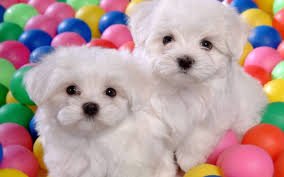
Introduction
These guidelines are intended to help you evaluate puppies between 6 and 12 weeks old. They should help you to select a puppy who shows good potential for developing into a suitable pet dog. When choosing a puppy from a litter, feeling especially drawn to one puppy over another is an important part of deciding which pup to bring home. However, if you want to improve the odds of having a positive puppy parenting experience, your initial emotions aren’t the only factor you should consider.
The Benefits of Careful Puppy Selection
When selecting a puppy from a litter, thoroughly evaluating each of the puppies as objectively as possible will increase your chances of selecting one who will develop into a suitable pet. Some people are drawn to puppies who show extremes in behavior—such as very shy or frightened puppies—in the hopes that they will be able to help one develop into a well adjusted, friendly, confident adult dog. Likewise, some people choose a puppy with apparent health problems so that they can provide the puppy with a good home that he might not otherwise find.
Choosing a puppy who exhibits problematic behavior or physical health problems is a personal choice, but it should be an informed decision. Raising a puppy with health or behavior problems can be a challenge to begin with and can be an even greater undertaking if the problems come as a surprise. Many behavior problems can be modified with early training, but the amount of time and effort needed to do so is hard to predict, and the final result is impossible to determine beforehand.
There are no perfect puppy tests that will allow you to predict with certainty how a puppy’s behavior will develop as he matures. There’s no guarantee that a pup who seems to be the “pick of the litter” will turn out to be a well-adjusted adult dog. But your chances of choosing a puppy who’ll develop into a well-adjusted adult are much greater if you know how to screen the litter of puppies for behavior problems that might already be apparent.
Physical Health
A puppy’s physical health is just as important as his behavioral health, and a full veterinary examination will be needed to ensure that your new puppy is physically healthy. However, there are some general signs of good health that you can look out for when selecting a puppy from a litter:
- Energy level: A healthy puppy who’s well rested should appear alert and energetic.
- Eyes: A healthy puppy has bright, clear eyes without crust or discharge.
- Breathing: A healthy puppy breathes quietly, does not cough or sneeze a lot, and does not have crust or discharge at his nostrils.
- Body condition: A healthy puppy looks well fed, with some fat over his ribcage.
- Genitals: A healthy puppy doesn’t have feces or pus visible in or around his genital region.
- Coat: A healthy puppy has an attractive coat without excessive dandruff, dullness, greasiness or baldness.
- Gait: A healthy puppy walks and runs normally without limping or seeming stiff or sore.
- Hearing: A puppy who can hear properly should react if you clap your hands behind his head.
- Vision: A puppy who can see properly should notice a ball that rolls by slowly within his field of vision.
Behavioral Health
The following checklist is designed to help you look out for behaviors that often make puppies less suitable pets. Behavior problems in puppies often improve with careful training, but they can’t always be completely resolved.
How Do the Puppies Interact with Each Other?
Why This Matters
Puppies who show good social skills with their littermates are more likely to develop into adult dogs who are sociable with other dogs. It’s true that any puppy can become antisocial with other dogs later in life—there’s no way to predict a puppy’s future behavior with certainty—but a puppy who plays nicely with his littermates is much more likely to interact well with other dogs when he matures.
What to Do
Observe the entire litter in an environment that’s familiar to them, ideally at a time when they’re all awake and well-rested. Watch the puppies interact with each other.
What to Look For
- Notice which puppies seem comfortable both on top and on the bottom during play fighting and wresting games, and which puppies seem to only like being on top. Puppies who don’t mind being on the bottom—or puppies who are flexible and can play either role—will usually play well with a wider range of dogs as adults.
- Notice which puppies seem to like the company of the other pups and which ones seem to be loners. Puppies who like the company of their littermates are more likely to be interested in the company of other dogs as they mature than puppies who are asocial.
- Observe the reaction of puppies who get yelped at when they bite or roughhouse with another puppy too hard. Puppies who ease up when another puppy says “Ouch!” are more likely to respond appropriately when they play too roughly as adults than puppies who ignore the yelping of their playmates.
After observing the entire litter, you’ll probably have a sense of which puppies you’re most interested in. You can then assess each puppy, one at a time, in a quiet area where the puppy won’t be distracted by noise, littermates, food or toys.
Does the Puppy Seem to Like People?
Why This Matters
Puppies who show an interest in being around people are more likely to mature into adult dogs who are sociable with people. If possible, visit the litter with at least three people: an adult male, an adult female and a child under the age of 10. This enables you to observe the puppies’ interactions with people of various ages and both genders.
What to Do
Sit or stand a few feet away from the puppy. Using a friendly and enthusiastic voice, encourage him to approach you. You can also tap the floor or your leg with your hands, clap your hands or make kissy sounds. Try not to make any noises that might frighten the puppy. If he approaches you, encourage him to hang around for a little while by praising him and petting him gently. Have each person with you do the same thing and observe the puppy’s level of interest in being with the different people.
What to Look For
- Puppies who like people will usually approach people willingly and seem happy to stick around if encouraged with attention, such as gentle praise and petting. Nipping and jumping up on people are normal behaviors for young puppies and don’t reflect antisocial behavior.
- Puppies who are fearful of people may or may not approach them, and they’ll show one or more signs of being afraid, such as a tucked tail, tucked ears, rolling over and urinating, cowering or running away when someone tries to pet them.
- Independent puppies usually show no interest in interacting with people. They ignore people who try to encourage their approach, and they tend to wander off and explore the room instead.
Does the Puppy Respond Appropriately to Your Reaction When He Nips You?
Why This Matters
Puppies who respond appropriately to people and dogs who yelp in pain when they’re nipped too hard are more likely to develop into adult dogs with good control over the force of their jaws. Good jaw control allows dogs to get into scuffles with each other without causing injury. It may also make them gentler when they take food from people’s hands or play with people.
What to Do
Allow the puppy to mouth on your hands. When the puppy works his way up to a forceful nip, respond with a high-pitched “Yikes!” or “Ouch!” Then observe the puppy’s reaction. If he’s very excited, you might need to repeat this procedure a few times to give him a chance to notice your pain response and react appropriately.
What to Look For
- Puppies who are well prepared to learn to control the force of their jaws with appropriate feedback will notice your reaction and will stop nipping for a moment. They could very quickly return to chomping on your fingers, but that’s normal for this age.
- Puppies who are not well prepared to learn to control the force of their jaws with appropriate feedback will repeatedly ignore your reaction.
Does the Puppy Guard Things From People?
Why This Matters
Guarding valuable belongings is very common in dogs. This behavior helps animals survive in nature, but it’s not desirable or safe for pets who live in our homes.
What to Do
- Place some of the puppy’s food in a bowl and allow him to eat while you stand at least five feet away. Once he’s swallowed a few bites, approach him and pet him on the back and then along his neck. Place your hand in the bowl and gently press against the side of the puppy’s mouth. Stop at any point if the puppy stiffens, growls, snarls, snaps or tries to bite you.
- Offer the puppy a chewie, such as a flavored rawhide or pig’s ear. Let him chew for a few minutes while you stand at least five feet away. Once he’s eagerly chewing, approach the puppy and pet him on the back and along his neck. Then gently take hold of the chewie. Stop at any point if the puppy stiffens, growls, snarls, snaps or tries to bite you.
What to Look For
- Puppies who are relaxed when people approach and handle them during a meal or while chewing something are unlikely to have an existing guarding problem. However, puppies who do not show any signs of guarding food or toys can still develop guarding behavior when they’re little older. (To learn how to prevent the development of this problem, please see our article, Food Guarding.) The advantage of choosing a puppy who doesn’t show signs of guarding is that, with proper prevention exercises, it’s unlikely that the puppy will become a guarder as he matures.
- Puppies who become stiff, gobble their food much faster or behave aggressively when approached while eating will likely continue to do this as adults if they don’t receive specialized early training to resolve the problem.
Does the Puppy Like Being Handled by People?
Why This Matters
Some puppies are very relaxed about being restrained, touched and examined. Others aren’t. Puppies who aren’t comfortable with people handling them can be difficult to enjoy living with and a challenge to take care of. They can become fearful or aggressive at the veterinary clinic, during routine grooming and during day-to-day interactions with their human families.
What to Do
- Cradle the puppy gently between one arm and your torso, the way you might hold an infant. Try to hold the puppy in that position for a few minutes by using very gentle pressure with your free hand over his chest, against his armpits. Release him immediately if he seems frightened or behaves aggressively. A bit of squirming and making mild efforts at wiggling away are normal, and these don’t count as being afraid or aggressive.
- Touch the puppy all over, from the tip of his nose to the tip of his tail. Be sure to handle the areas puppies are often sensitive about, including the paws, rump, tail and mouth. Hold each paw gently but securely for five seconds and fiddle with a few of the puppy’s toenails. Hold him so that he’s facing you, and look into his eyes from a close distance for five seconds.
What to Look For
- Puppies who remain relaxed and calm and don’t object to gentle restraint and body handling are less likely to behave fearfully or aggressively when restrained and handled as adult dogs.
- Puppies who scream, snarl, bite, have a tantrum, urinate or defecate when restrained and handled are likely to continue to react this way unless they receive carefully planned training. With training intervention, some of these puppies will become comfortable with restraint and handling, but others won’t.
Does the Puppy Seem Overly Sensitive to Sights and Sounds?
Why This Matters
Some puppies are very sensitive to certain sights and sounds, while others aren’t. Puppies who are sensitive can be difficult to take care of because they can spend much of their time frightened, and they might not be able to share in activities that you would like them to.
What to Do
- When the puppy is at least 10 feet away from you and not looking at you, make a loud noise by banging a metal spoon against a metal food dish. (Just hit the dish once or twice.) Observe the puppy’s reaction. Do not repeat the banging noise. See the section below, What to Look For, before proceeding to Step 2. Don’t do Step 2 at all if the puppy seems nervous or frightened.
- Walk by the puppy, at least a few feet away, carrying a large, empty cardboard box. See What to Look For, below, to determine whether or not the puppy is frightened. If you think he is, don’t proceed. If he seems relaxed and completely unafraid, you can experiment with other large objects. Open a big beach towel in the air at least five feet away from the puppy, as though you were shaking off some sand. Place a large stuffed animal about three feet away from the puppy. Slowly roll a skateboard along the floor, at least 10 feet away from the puppy. If, at any point, the puppy seems frightened, nervous or upset, immediately stop what you’re doing. Squat down next to him, pet him gently and speak in soft, soothing tones.
What to Look For
- Puppies who are initially startled by these experiences but then carry on with what they were doing or approach to investigate the suspicious sight or sound are more likely to cope well with the noises and objects they’ll encounter in everyday life as a pet.
- Puppies who react with extreme fear or any aggression to these experiences—by trembling, cowering, urinating, defecating, running away, snarling or attempting to bite—and puppies who don’t recover from a startling experience quickly aren’t likely to cope well with sounds and sights in their environment. These puppies will require specialized desensitization training to improve their comfort level with these experiences.
Improving Your Odds for a Successful Relationship
You’ll increase your chances of choosing the puppy who’s right for you if you make your selection based on both your heart and your head. Be aware of your feelings toward the puppy you choose and your objective observations of his apparent physical and behavioral health.
Courtesy: The American Society for the Prevention of Cruelty to Animals
Others

|
Want to be A veterinarian...?? |

|
Puppy Selection Tips |
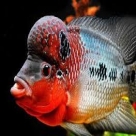
|
Ornamental Fish Rearing Tips |
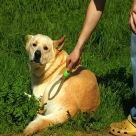
|
Grooming of Pet Dogs |
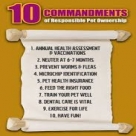
|
How to be a good pet owner |

|
Pet health tips |
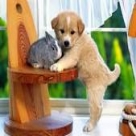
|
Puppy Rearing Tips |
|
|
Animal Health Tips:WALKING DANDRUFF TO TROUBLE YOUR LOVED ONES |
|
|
Dog Skin Care Tips |
|
|
Protecting your Pets Vision |
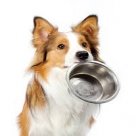
|
Safe Food items for your Pet Dog. |